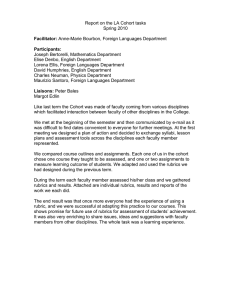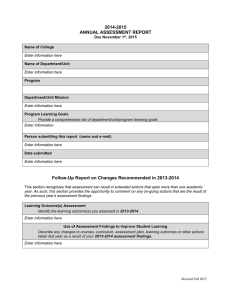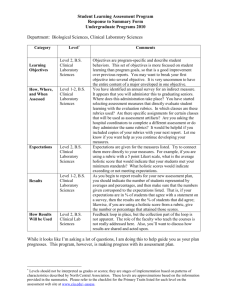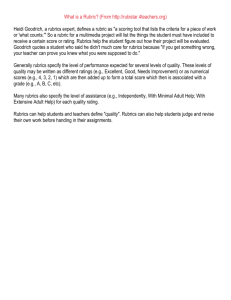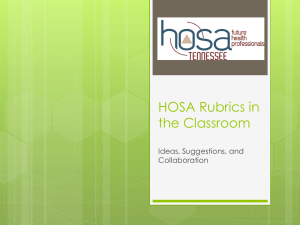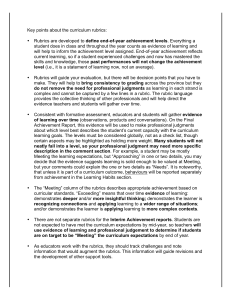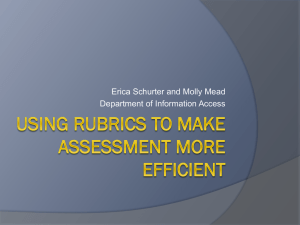Report on the LA Faculty Cohort tasks Spring 2011
advertisement
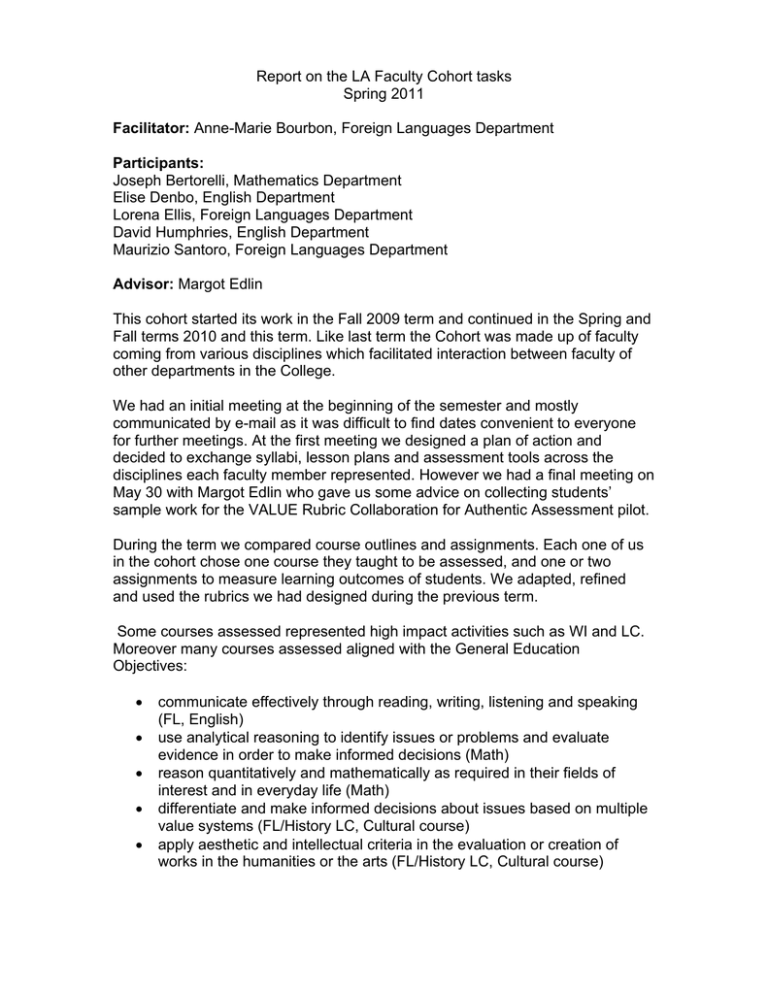
Report on the LA Faculty Cohort tasks Spring 2011 Facilitator: Anne-Marie Bourbon, Foreign Languages Department Participants: Joseph Bertorelli, Mathematics Department Elise Denbo, English Department Lorena Ellis, Foreign Languages Department David Humphries, English Department Maurizio Santoro, Foreign Languages Department Advisor: Margot Edlin This cohort started its work in the Fall 2009 term and continued in the Spring and Fall terms 2010 and this term. Like last term the Cohort was made up of faculty coming from various disciplines which facilitated interaction between faculty of other departments in the College. We had an initial meeting at the beginning of the semester and mostly communicated by e-mail as it was difficult to find dates convenient to everyone for further meetings. At the first meeting we designed a plan of action and decided to exchange syllabi, lesson plans and assessment tools across the disciplines each faculty member represented. However we had a final meeting on May 30 with Margot Edlin who gave us some advice on collecting students’ sample work for the VALUE Rubric Collaboration for Authentic Assessment pilot. During the term we compared course outlines and assignments. Each one of us in the cohort chose one course they taught to be assessed, and one or two assignments to measure learning outcomes of students. We adapted, refined and used the rubrics we had designed during the previous term. Some courses assessed represented high impact activities such as WI and LC. Moreover many courses assessed aligned with the General Education Objectives: communicate effectively through reading, writing, listening and speaking (FL, English) use analytical reasoning to identify issues or problems and evaluate evidence in order to make informed decisions (Math) reason quantitatively and mathematically as required in their fields of interest and in everyday life (Math) differentiate and make informed decisions about issues based on multiple value systems (FL/History LC, Cultural course) apply aesthetic and intellectual criteria in the evaluation or creation of works in the humanities or the arts (FL/History LC, Cultural course) During the term each faculty member assessed his/her class using rubrics and gathered results. Attached are individual assignments, rubrics, results and reports of the work we each did during the term. This data was collected at the end of the term. The end result was that once more everyone had the experience of using a rubric, and we were successful at adapting this practice to our courses. Some of us were able to revise and to fine tune the rubrics used before. Also we noticed that students who were going to be assessed showed a keen interest in the rubrics which were distributed and explained to them. In some courses students even used the rubrics as a basis and guideline to review their peers’ essays and their work. Consequently they took their assignments more seriously since, to them, they were more formalized and measured in a systematic way. This shows promise for future use of rubrics for assessment of students’ achievement both for students and instructors. It was also very enriching to share issues, ideas and suggestions with faculty members from other disciplines. In the same way as it did in previous terms, the whole task was a learning and enriching experience for faculty and students alike.
